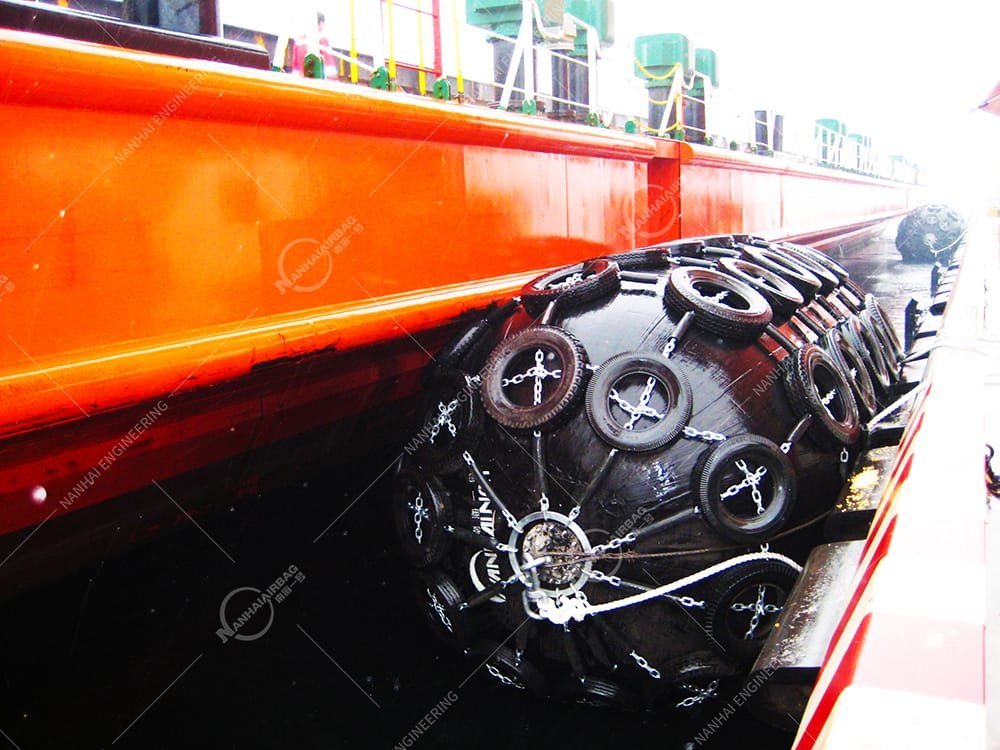Will foam fenders crack in freezing temperatures?
08/05/2025How are foam filled fenders made?
08/07/2025Should I fully deflate the pneumatic fender?
Introduction
Pneumatic fenders—also known as Yokohama fenders or floating fenders—are inflatable rubber devices. They cushion ships when they dock or transfer between vessels. They work well because they absorb energy and apply low pressure to the hull.

Why Fully Deflating Is Not a Good Idea
Do not fully deflate a pneumatic fender for long-term storage. Leading manufacturers like Trelleborg and NANHAI advise against storing pneumatic fenders completely deflated. That condition can greatly shorten their service life. If you deflate them completely, the rubber can fold, stick, and deform, which weakens the fender.
Best Practice for Storage
- Clean and dry the fender before storage. Remove dirt, grease, and moisture. Let it air dry completely.
- Inflate it slightly—just enough to keep its shape. A pressure of around 20 kPa is ideal to avoid folding and rubber adhesion.
- Choose a good storage spot: cool, dark, and dry. Keep it away from direct sunlight, heat sources, ozone, acids, oils, and chemicals. Work temperature should stay below about 25 °C (77 °F).
- Store pneumatic fenders separately without stacking. Stacking can harm the rubber surface and cause deformation.
- Check every 3–6 months. Look for damage, leaks, rust, and worn parts. Re-inflate or clean when needed.
Why a Little Air Helps
Keeping a small air charge inside the fender keeps it round and stops inner layers from touching and sticking. That preserves the shape and strength of the rubber over tim.
When Full Deflation Is Acceptable
It’s OK to deflate fully only for transport or folding, and only for a short time. For example, when shipping or folding the fender to save space—just flush it dry, fold carefully, and re-inflate soon after arrival.
Quick Storage Checklist
- ✅ Clean and dry completely
- ✅ Inflate to around 20 kPa
- ✅ Store in cool, dark, dry place
- ✅ Don’t stack
- ✅ Inspect every 3–6 months
Conclusion
In short: Do not fully deflate your pneumatic fender for long-term storage. Keep it slightly inflated to protect its shape, avoid rubber damage, and extend its life. Only fully deflate if you plan to transport it—and re-inflate soon after. Follow simple care steps and you will keep your fender working strong.
